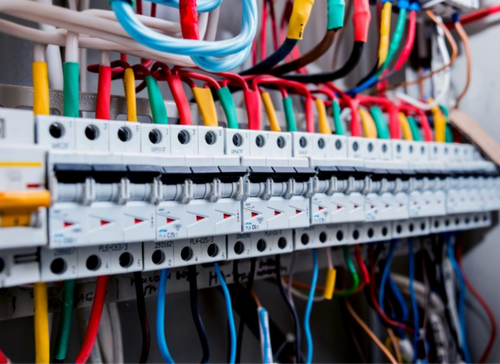Debunking Electrical Installation: Understanding Codes and Regulations for a Legal and Safe Arrangement
In the realm of electrical installment, adherence to codes and policies is extremely important to guarantee both legitimacy and safety. The trip to demystifying electric installment goes past simple familiarity with laws; it requires a profound grasp of how to carry out secure electrical methods successfully.
Importance of Electrical Codes
The adherence to electrical codes is critical in ensuring the security and reliability of electric installments. Electric codes function as a collection of standards and guidelines that dictate the correct design, installation, and maintenance of electrical systems. These codes are established to reduce the threat of electrical risks, fires, and other safety and security issues that might occur from damaged electrical job.

Additionally, electric codes are frequently upgraded to incorporate brand-new innovations, ideal methods, and precaution. Remaining upgraded with these codes is necessary for experts in the electrical industry to ensure that their work fulfills the most recent safety and security criteria. Eventually, the significance of electrical codes hinges on developing a safe and secure and effective electrical infrastructure that profits both people and communities.
Key Laws for Safety
A number of basic laws regulate the security standards in electric installments. One crucial law is the National Electric Code (NEC), which offers standards for secure electric design, installation, and assessment to shield individuals and residential property from electric threats. The NEC covers facets such as wiring approaches, grounding, overcurrent defense, and equipment setup to make certain a secure electric system.
Another essential law is the Occupational Safety And Security and Wellness Management (OSHA) criteria, which concentrate on the safety and security of employees entailed in electric installations (BRE Electrical Solutions). OSHA guidelines include demands for correct training, security treatments, and personal protective tools to avoid office accidents and injuries
Additionally, the International Electrotechnical Compensation (IEC) criteria intend to harmonize electrical setup regulations on an international range. These standards address concerns like electric tools security, electromagnetic compatibility, and power efficiency to advertise uniformity and safety and security in electrical setups worldwide.
Conformity with these crucial laws is important to ensure the safety and legality of electrical installations, safeguarding both individuals and home from the dangers related to electrical energy.
Comprehending National Electric Code
Secret guidelines such as the National Electrical Code (NEC) offer vital guidelines for risk-free electrical style, setup, and examination to make sure the security of individuals and residential or commercial property from electrical threats. The NEC, also called NFPA 70, is a thorough collection of criteria for electric setups that are updated every 3 years. It is established by the National Fire Security Association (NFPA) and is extensively taken on across the United States.
The NEC covers numerous elements of electrical work, including wiring techniques, grounding, overcurrent security, and tools installation. It aims to secure individuals and property by dealing with prospective threats connected with electrical systems. Conformity with the NEC is commonly enforced by local authorities having territory (AHJs), such as constructing code officials and inspectors.
Understanding the NEC is critical for electric specialists, developers, and assessors to make certain that installations meet the necessary safety requirements. By adhering to the NEC standards, experts can assist stop electrical crashes and make sure the reliability of electric systems in residential, business, and commercial setups.

Compliance With Local Building Regulations
Comprehending and adhering to neighborhood structure codes is vital for guaranteeing the safety and conformity of electrical installations within a details territory. These codes describe specific needs for electrical installments, such as the type of wiring to be made use of, placement of outlets, grounding approaches, and lots capabilities.
When it comes to electric setups, failure to abide with regional structure codes can result in serious repercussions. Non-compliant installations may position security risks, raise the risk of electrical fires, and lead to costly penalties or legal concerns.
Guaranteeing Safe Electric Practices
Practicing rigorous adherence to established safety procedures is essential in the field of electrical installations to minimize prospective risks and make certain the wellness of individuals and properties. Safety and security in electrical job includes numerous aspects, starting with the correct training of personnel included in installation, maintenance, and repair. It is vital to comply with maker instructions thoroughly when handling electric components and devices. Prior to beginning any work, it is essential to carry out an extensive danger evaluation to recognize potential risks and carry out safety nets. Using personal protective tools (PPE) such as protected gloves, shatterproof glass, and non-conductive footwear is non-negotiable to secure against electrical shocks and arc flashes. Routine tools inspections, screening, and upkeep timetables are crucial to find and rectify faults prior to they rise right into safety risks. Adherence to correct lockout-tagout procedures throughout maintenance activities is crucial to protect against unintentional energization of circuits. By focusing on risk-free techniques, electrical installments can BRE Electrical Solutions function successfully while reducing the chance of mishaps or damages.
Conclusion
Finally, adherence to electrical codes and guidelines is critical for ensuring the safety and legitimacy of electrical installments. Understanding the National Electric Code and conformity with neighborhood building codes are crucial for a safe arrangement. By adhering to these guidelines and practicing secure electric practices, people can prevent prospective hazards and make sure the proper functioning of their electrical systems.
Comments on “Customized BRE Electrical Solutions for Efficient and Safe Installations”